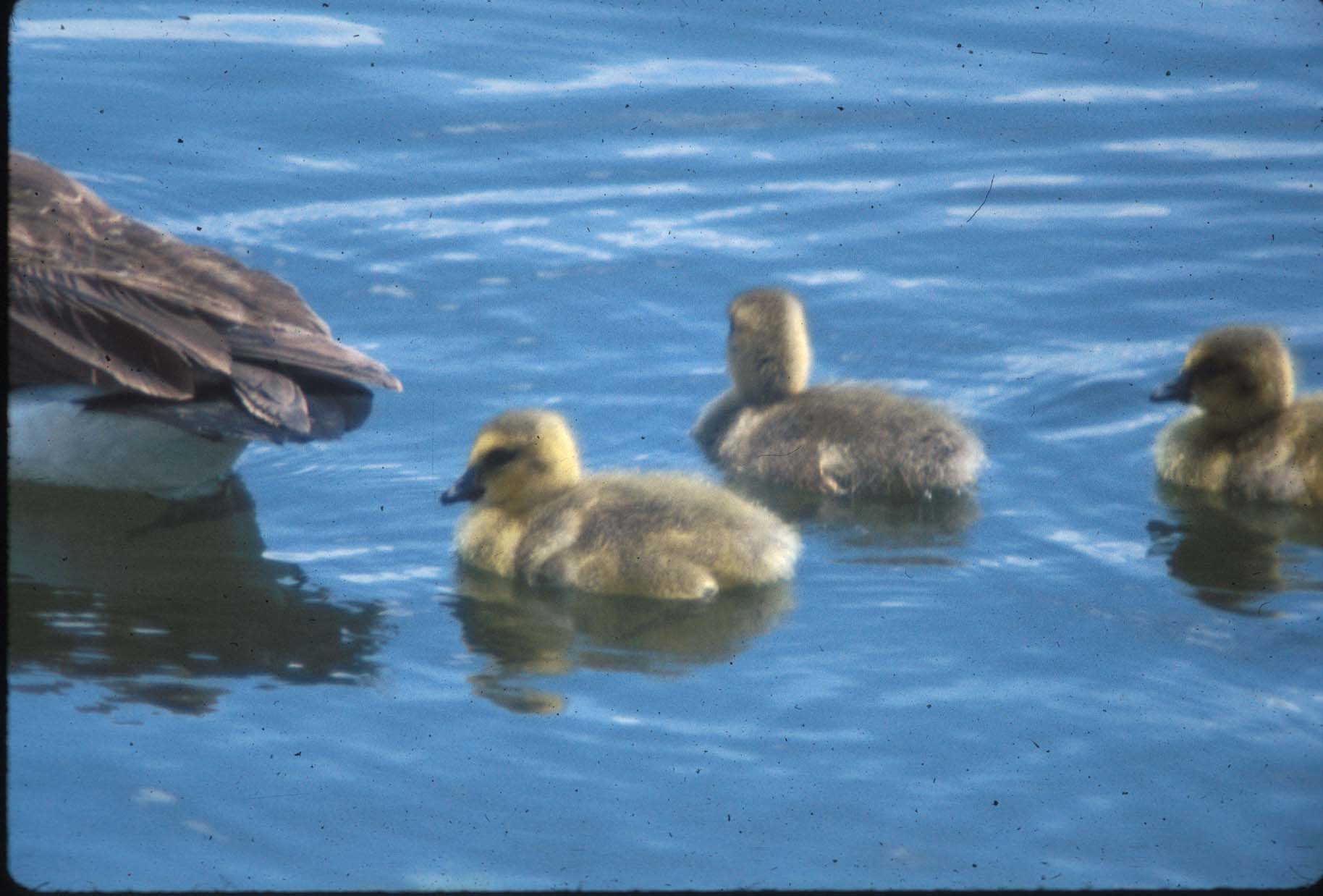
Precocial development
Precocial young are ready to function as semi-independent animals soon after hatching or birth. Their need for parental care is limited, and in some cases absent. What selective forces lead the young of some species to be semi-independent, while young of others are so poorly developed that they need intensive parental care? One hypothesis is that having semi-independent offspring allows the mother to have a larger clutch. Alternatively, some habitats or feeding preferences may favor offspring independence. In mammals the young of herbivores are more fully developed at birth than the young of carnivores. This difference may reflect a number of selective forces, such as the fact that many herbivores must continuously be on the move to find suitable forage. Herbivore young may also have fewer challenges in terms of learning how to select and process food than do carnivores, which must learn complicated strategies of prey capture.
 |
Canada goose, Branta canadensis, young are able to swim and feed themselves soon after hatching. While they rely on their mother for protection and for information about feeding, their mother does not pass food to them. Contrast these precocial goslings with the intensive parental care needed by altricial young. |
page 3-*
copyright ©2002 Michael D. Breed, all rights reserved